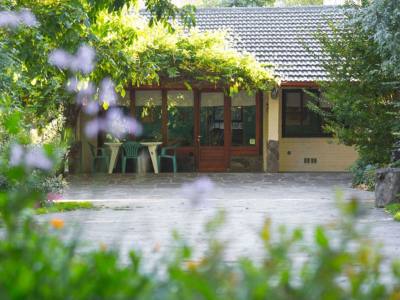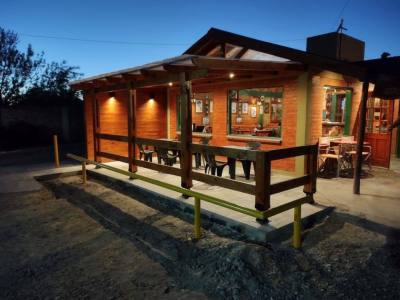
In the cliffs of Gaiman, Bryn Gwyn, which means “white hill” in Welsh, proposes an interesting tour across prehistorical Patagonia.
We had gone to Gaiman to drink some mate with Marcela under the shady trees in the Los Mimbres inn.In the morning, we visited the Egidio Feruglio paleontological museum and, as it was a shiny afternoon, we resolved to visit the Bryn Gwyn Geopark before returning to Trelew. Specially planned and designed as a paleontological outdoor exhibition, Bryn Gwyn is the fruit of 14 years of excavations and is the first in its kind in South America.
We retraced our steps along the road to the farms and took the detour to the park, passing by a sculpture dedicated to agricultors. We got to the Campo Inferior station, located on the cliff slope. We were welcomed by Mauricio, who provided us with information about the self-guided tour.

Equipped with brochures and a photo camera, we began the tour leaving from behind the station and advancing chronologically since prehistorical times until a near past. As we ascended, we found the various geological layers with different representative specimens which act as narrative reference.
The first formation, called Sarmiento, was originated 40 million years ago, when the sea had advanced and covered the tree scenery in Patagonia when it would resemble an African savannah. At this level, amid volcanic sediments, a great variety of land mammals was found. These specimens dwelled this region, which used to be much warmer in those days. On this arid hills, we discovered the remains of extinct animals and wasp species such as the chubutolithes gaimanensis, the most ancient item in this excavation.

Lastly, on the top of the bluff, geological formations called tehuelches originated by volcanic activity refer to the last 100,000 years. They were transported to this region by the action of glaciers and rivers.
After visiting the Geopark, we traveled along the road explored by the Ameghino brothers, Simpson and Feruglio in the early XX Century.

























